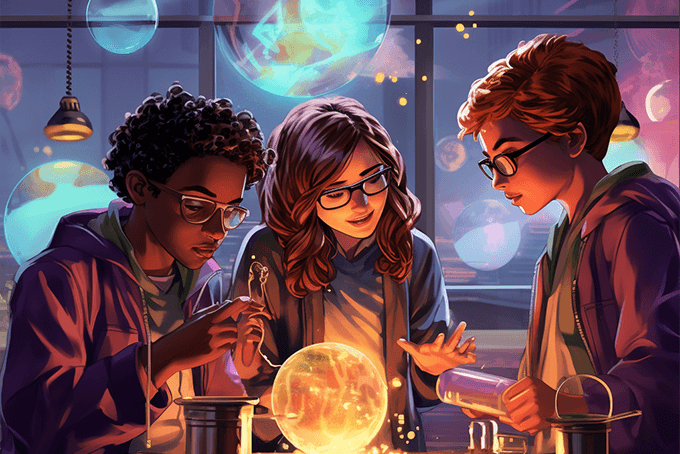Working together in a small group to solve a problem is often one of the biggest challenges students in the classroom face. Trying to work with classmates to solve what could be a challenging question often tests the skill of the student. But this type of collaboration, or cooperative learning scenario, can actually promote growth in the cognitive function of students.
1. Collaboration
“According to Lev Vygotsky, collaboration promotes cognitive growth because students’ model for each other more advanced ways of thinking than any would demonstrate individually. According to Jean Piaget, collaboration among peers hastens the decline of egocentrism and allows the development of more advanced ways of understanding and dealing with the world,” a Cengage report said.
When students work in these groups to exercise problem-based learning, they are also using language and trying to connect with fellow group members. The addition of technology also tests the brainpower of the group.
- To compare and contrast problem based learning and how it applies in both large and small classrooms, one article of reference includes McMaster University’s “Problem-based learning, especially in the context of large groups.”
2. Access to the latest technology
“Lev Vygotsky forwarded the notion that higher mental functions (the way we understand things – all things) are mediated (modified, limited, or enabled) by language. Thus it behooves students to work to construct their learning in a socio-cultural environment. The authors believe that this environment needs to be infused with the use of technology as a tool to help construct that learning,” a report entitled Vygotskian Viewpoint: Technology and Constructivism said.
For detailed information about Jean Piaget’s theories of learning and how cognitive development is formed in the classroom, see this Funderstanding article.
Classrooms that may use Vygotsky inspired methods to collaborate are seemingly non-traditional, however.
- For teaching notes and the ability to connect with other educators about PBL in this area, visit The PBL Clearinghouse, through The University of Delaware Web site.
3. Students are given an active role
“Vygotsky’s theory promotes learning contexts in which students play an active role in learning. Roles of the teacher and student are therefore shifted, as a teacher should collaborate with his or her students in order to help facilitate meaning construction in students. Learning therefore becomes a reciprocal experience for the students and teacher,” Learning-Theories.com said.
- Technology may change student roles and teacher roles. With more collaboration and an active role in decision making, teachers may see students acting more confident and feeling comfortable taking on larger projects. To learn about the educational changes your students may encounter, see the Effects of Technology on Classrooms and Students.To learn more about Vygotsky’s theories of curriculum, instruction and assessment, check out this additional Funderstanding article.



